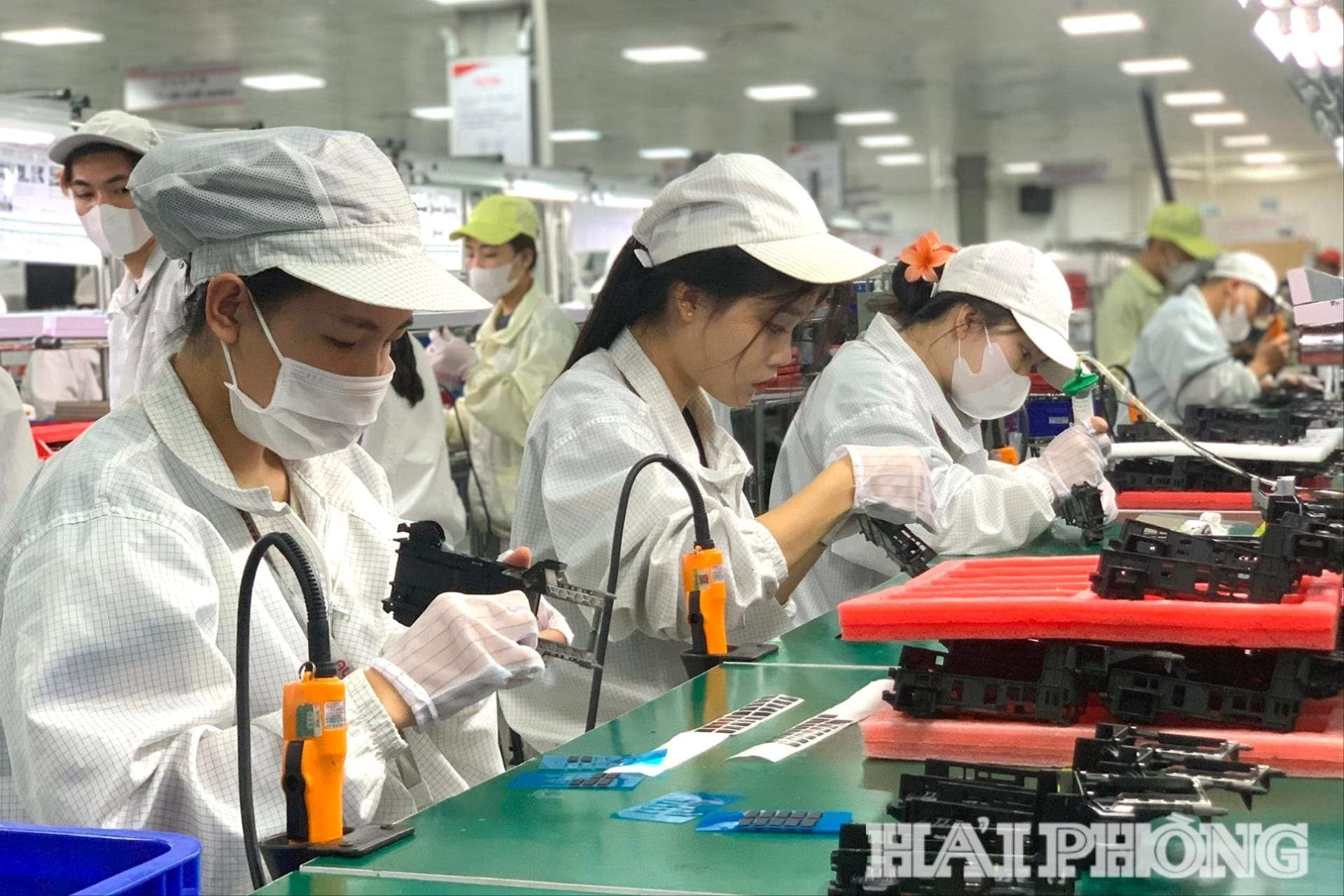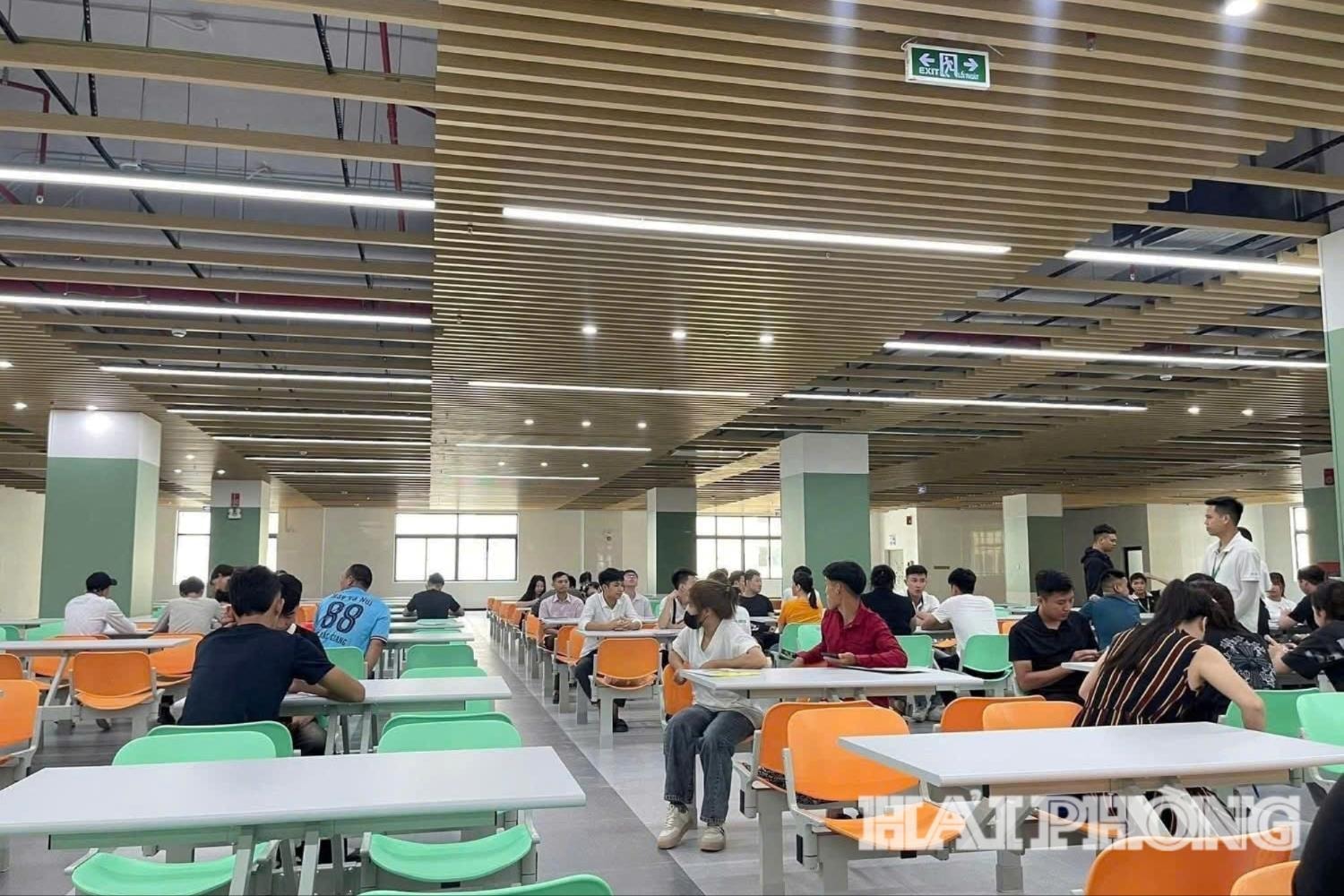Generating labor resources for Hai Phong’s industrial parks
A growing number of companies in Hai Phong’s industrial parks are facing a labor shortage as demand continues to outpace supply.

Labor shortage
Hai Phong city is home to 42 industrial parks and economic zones. By the end of July 2025, these parks and zones had accommodated 1,900 projects with a total registered capital of nearly 50 billion USD, generating jobs for over 343,000 workers. Yet many businesses are struggling with labor shortages, both in unskilled and trained labor segments.
At the regular July 2025 job fair hosted by the Hai Phong Employment Service Center, Regina Miracle International Vietnam Co., Ltd., a major manufacturer of sportswear and accessories in VSIP industrial park, announced it was seeking to recruit over 1,900 workers.
In western Hai Phong, Toyo Denso Co., Ltd. in Nam Sach industrial park is looking to hire 1,000 unskilled workers and around 300 seasonal and short-term employees.
Meanwhile, companies such as Kyocera Document Technology Vietnam Co., Ltd. (Dinh Vu – Cat Hai industrial park) and Pegatron Vietnam Co., Ltd. (DEEP C 2A industrial park) have been posting recruitment notices for more than six months but are still struggling to meet their staffing needs.

According to Nguyen Thi Thanh, Head of the Employment Consultation, Job Referral, and Vocational Training Department of the Hai Phong Employment Service Center, the competition to recruit workers is becoming increasingly fierce. To attract applicants, companies are not only offering higher wages and better benefits but also implementing incentive schemes, such as cash bonuses and referral commissions for employees who bring in friends or family members to join the workforce.
Long-term solutions needed
It is estimated that Hai Phong will need an additional 130,000 workers in its industrial parks and economic zones by 2030. To meet this growing demand, bold and strategic solutions are needed to expand the labor supply.
According to Dinh Minh Tuan, Deputy Director of the city Department of Education and Training, the city plans to improve its education streamlining targets, aiming to direct about 23% of secondary and high school graduates into vocational education pathways.
.jpg)
The department also supports expanding the reach of vocational training institutions to attract more learners and retrain workers from other localities to meet local industry demands.
Some vocational and technical schools in Hai Phong have already begun extending their enrollment scopes and strengthening partnerships with Northern mountainous provinces. These efforts aim to increase training capacity and attract students from other regions to study and work in Hai Phong.
As the demand for labor in industrial parks and economic zones becomes more urgent, the city People’s Committee is developing special policies to attract talent. The goal is not just to prepare the ground for large investors but to build a thriving labor environment where skilled workers and professionals can settle and contribute in the long run.
MAI LE
